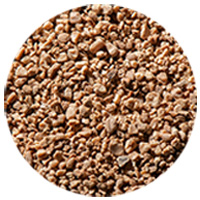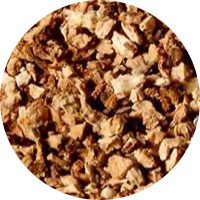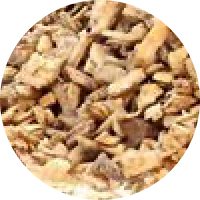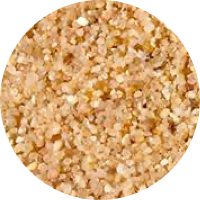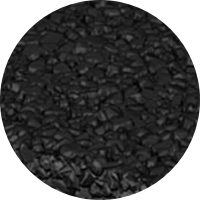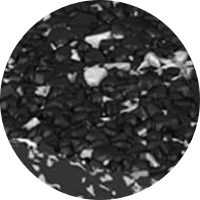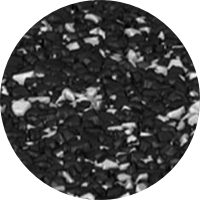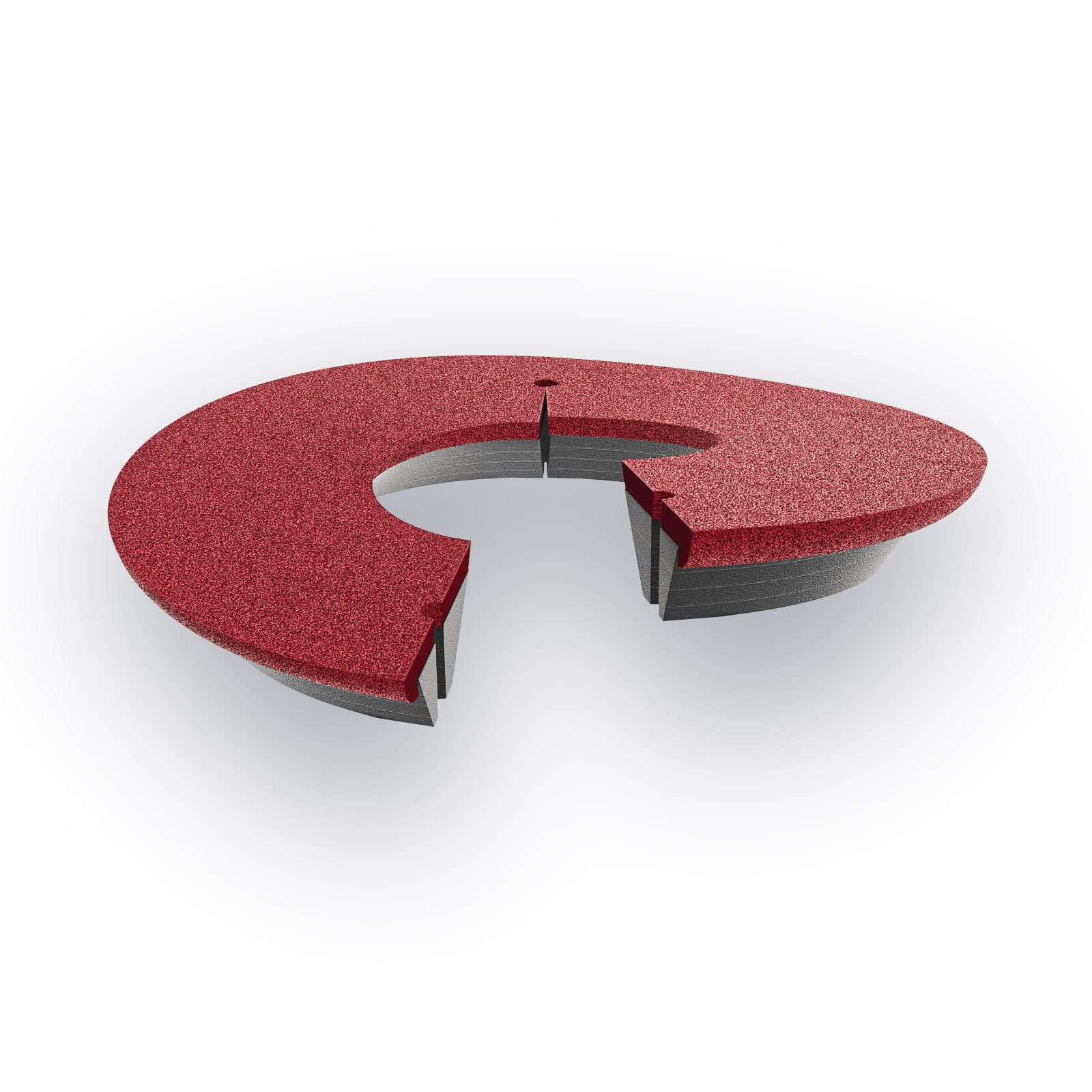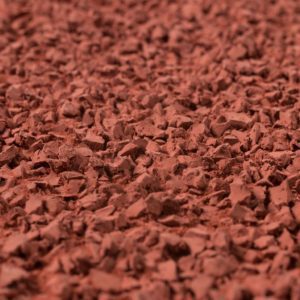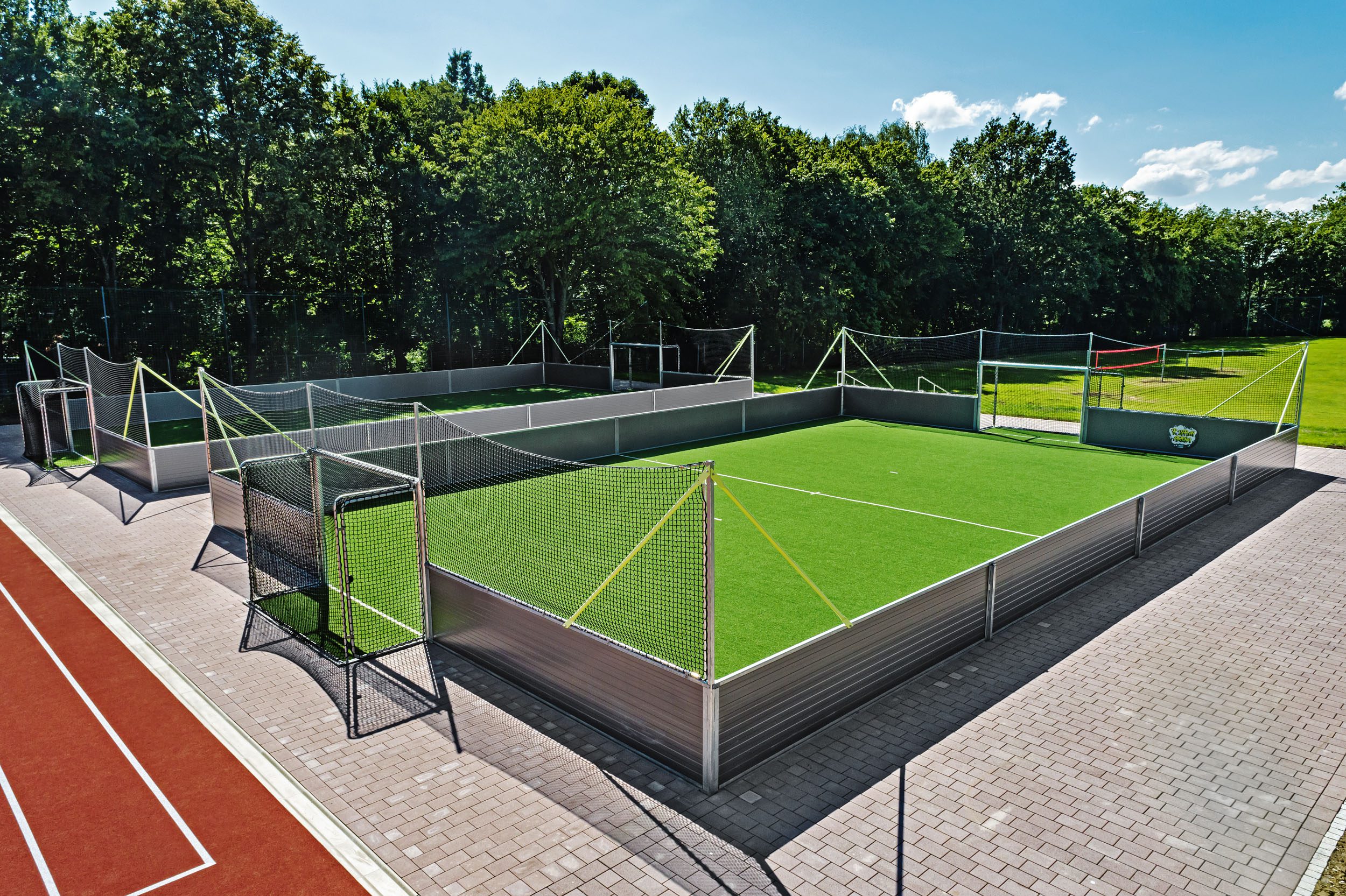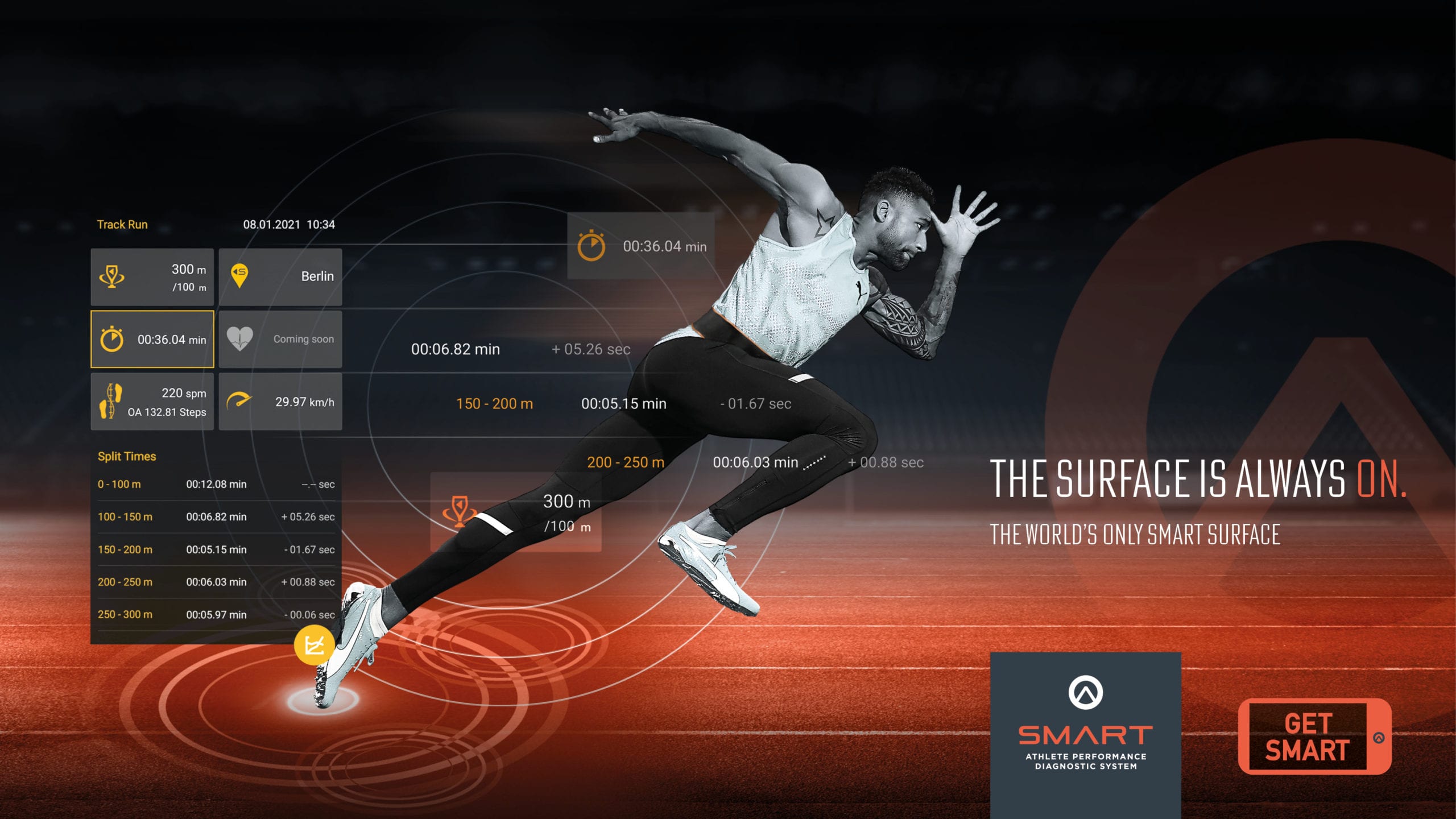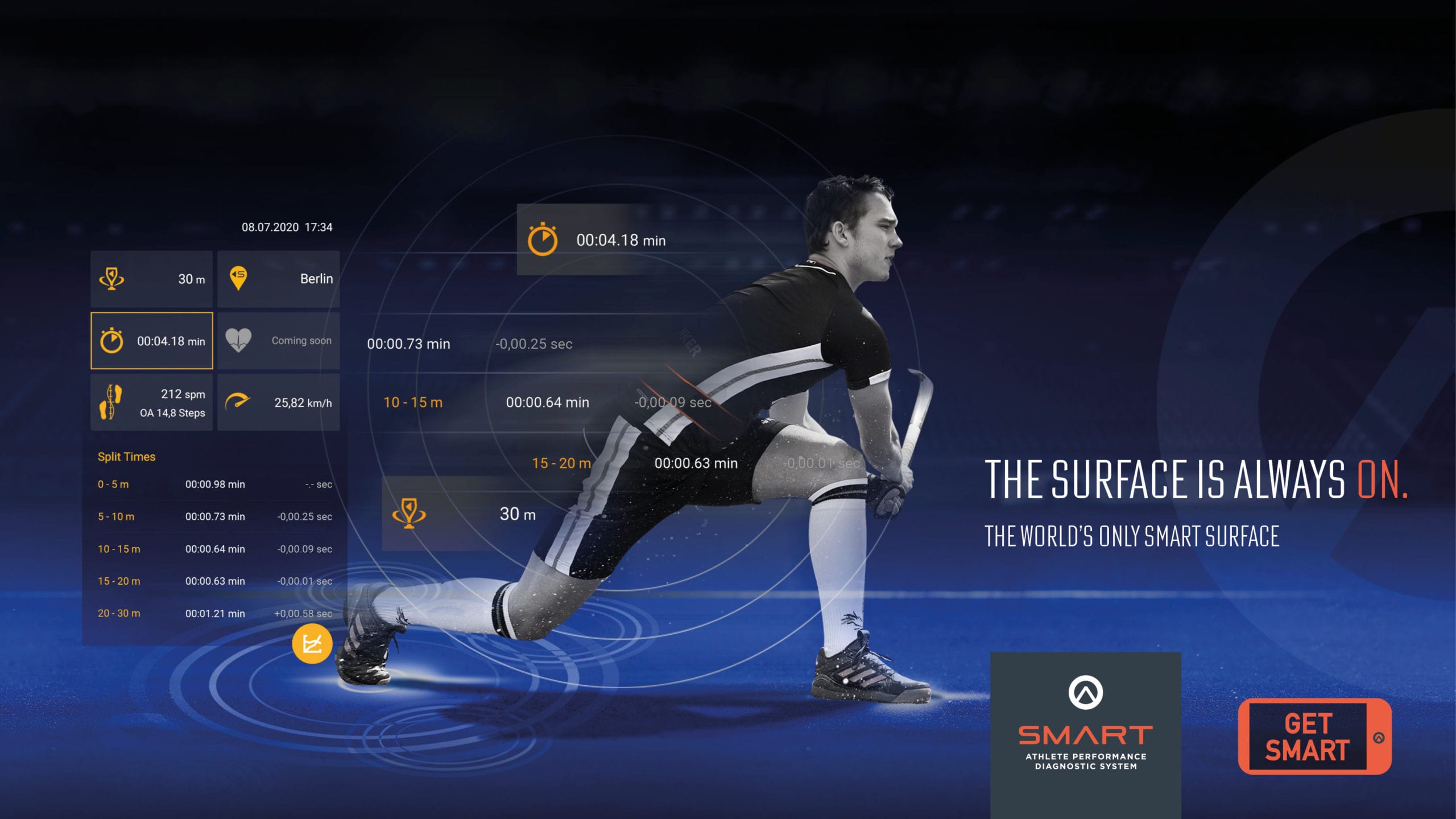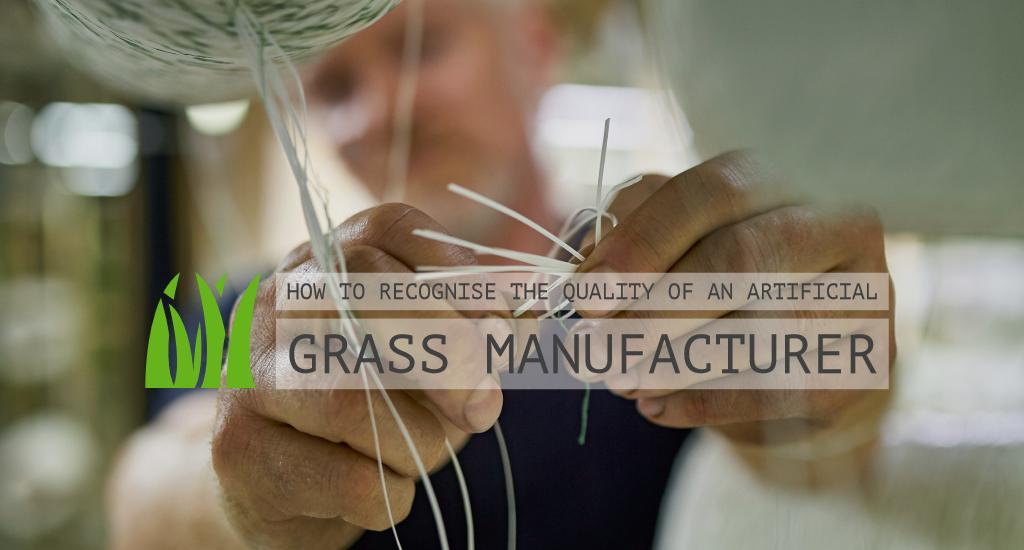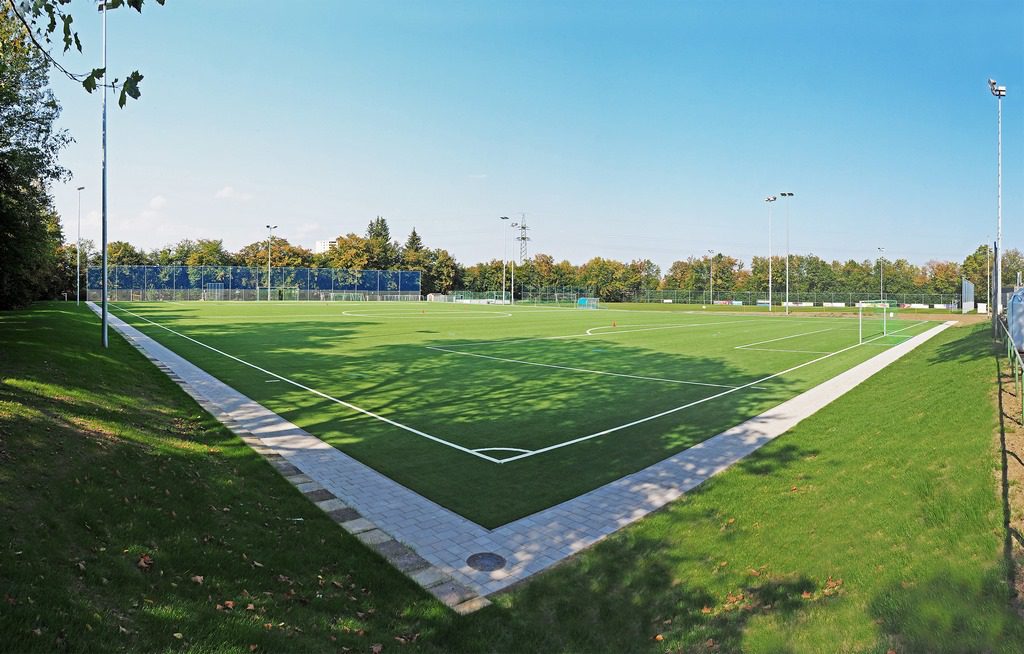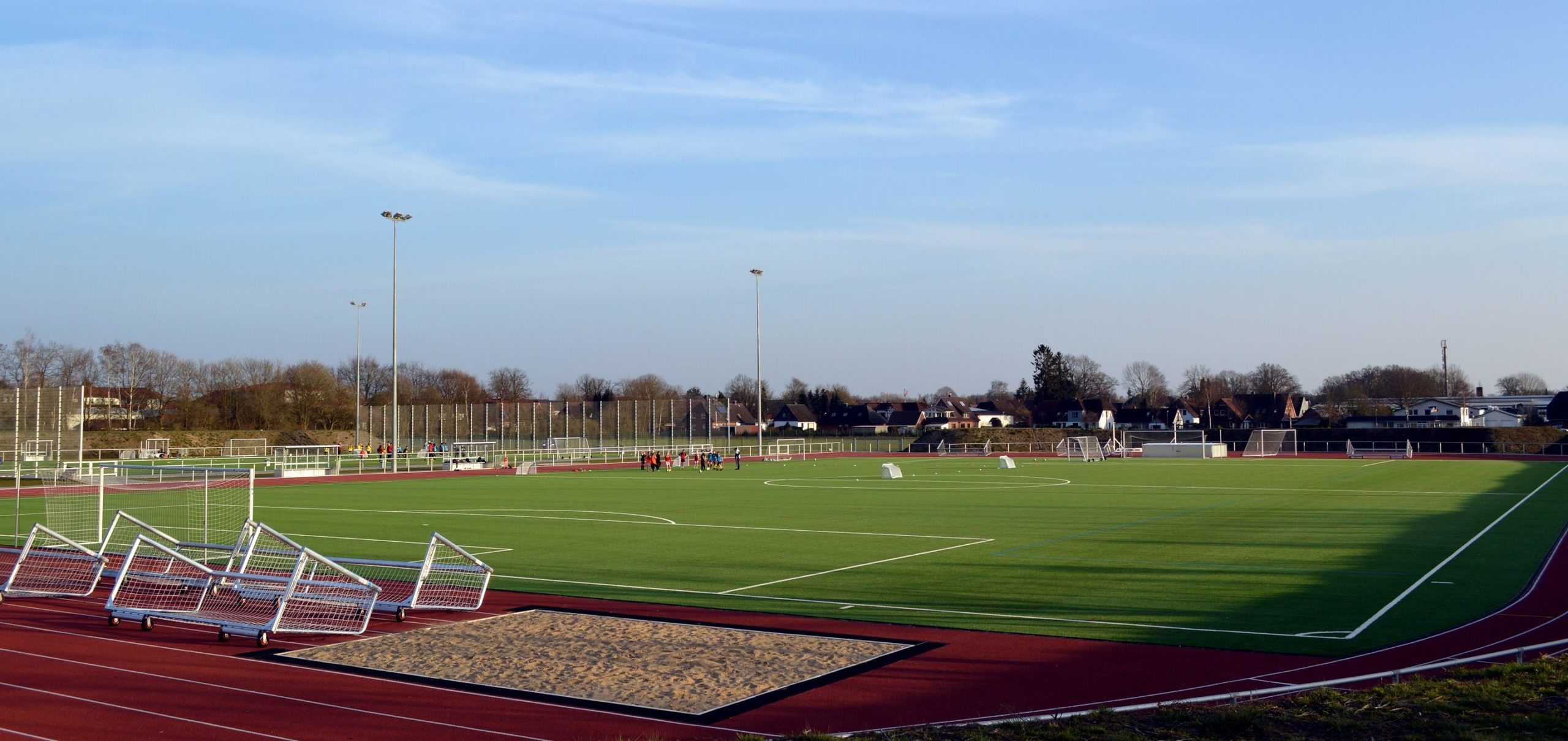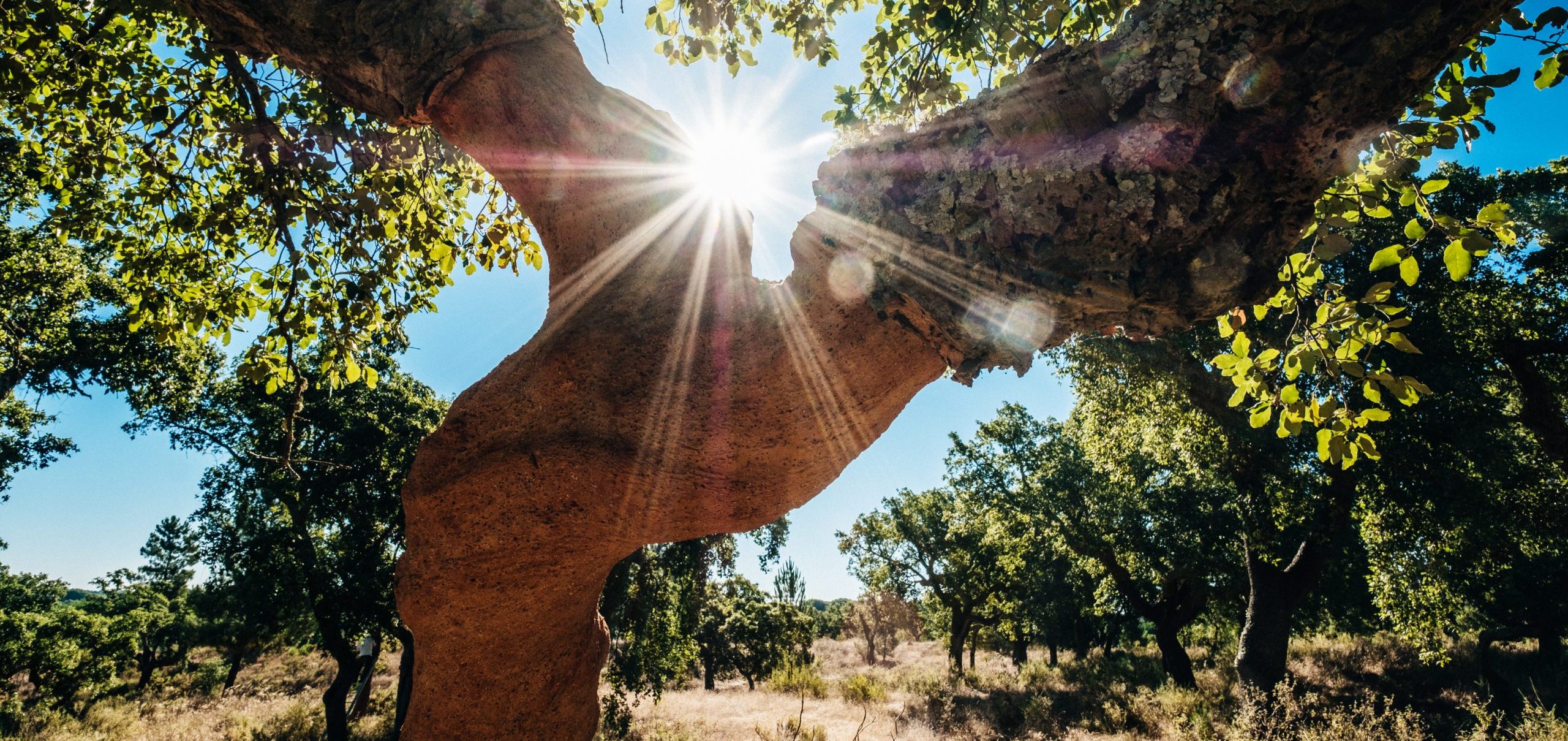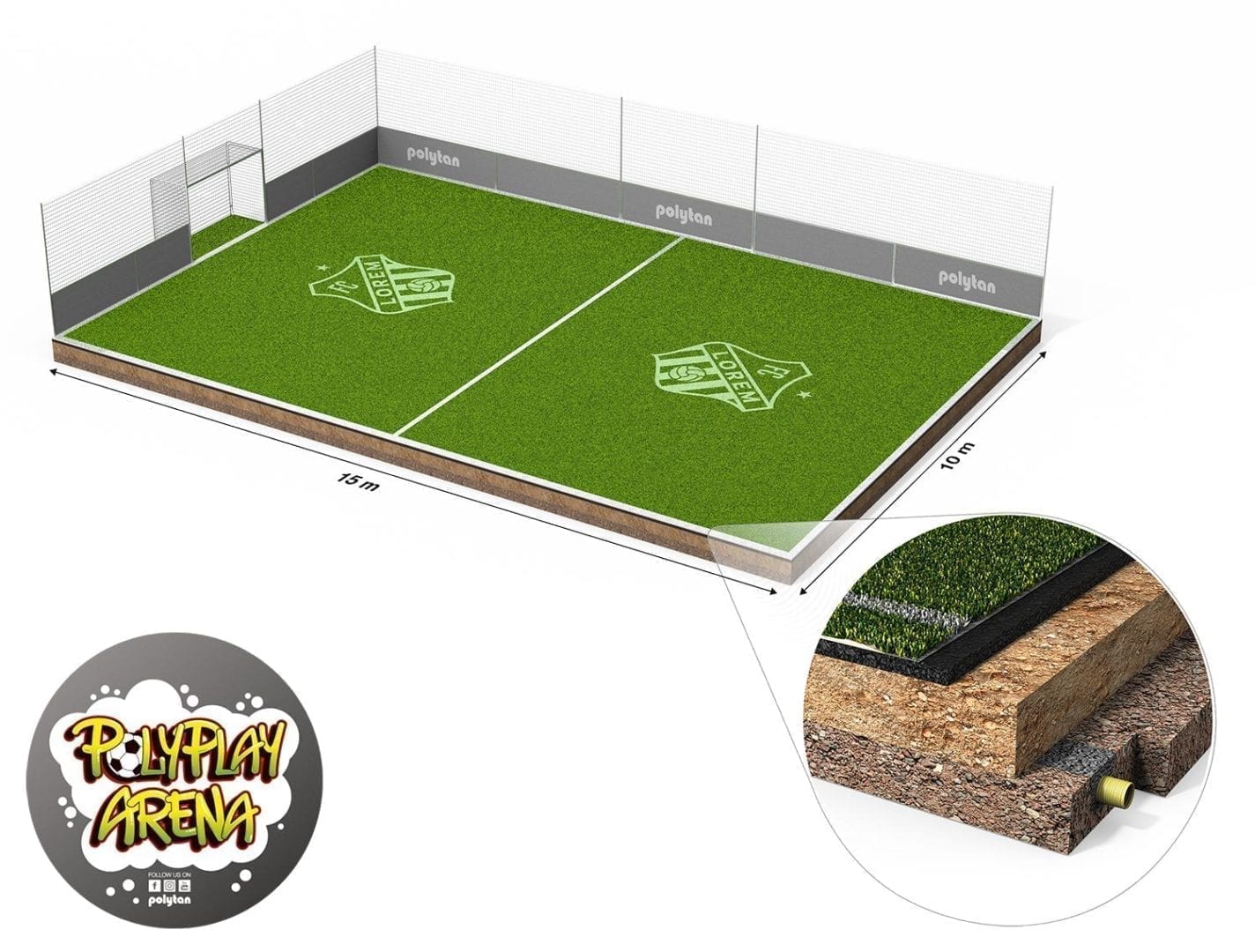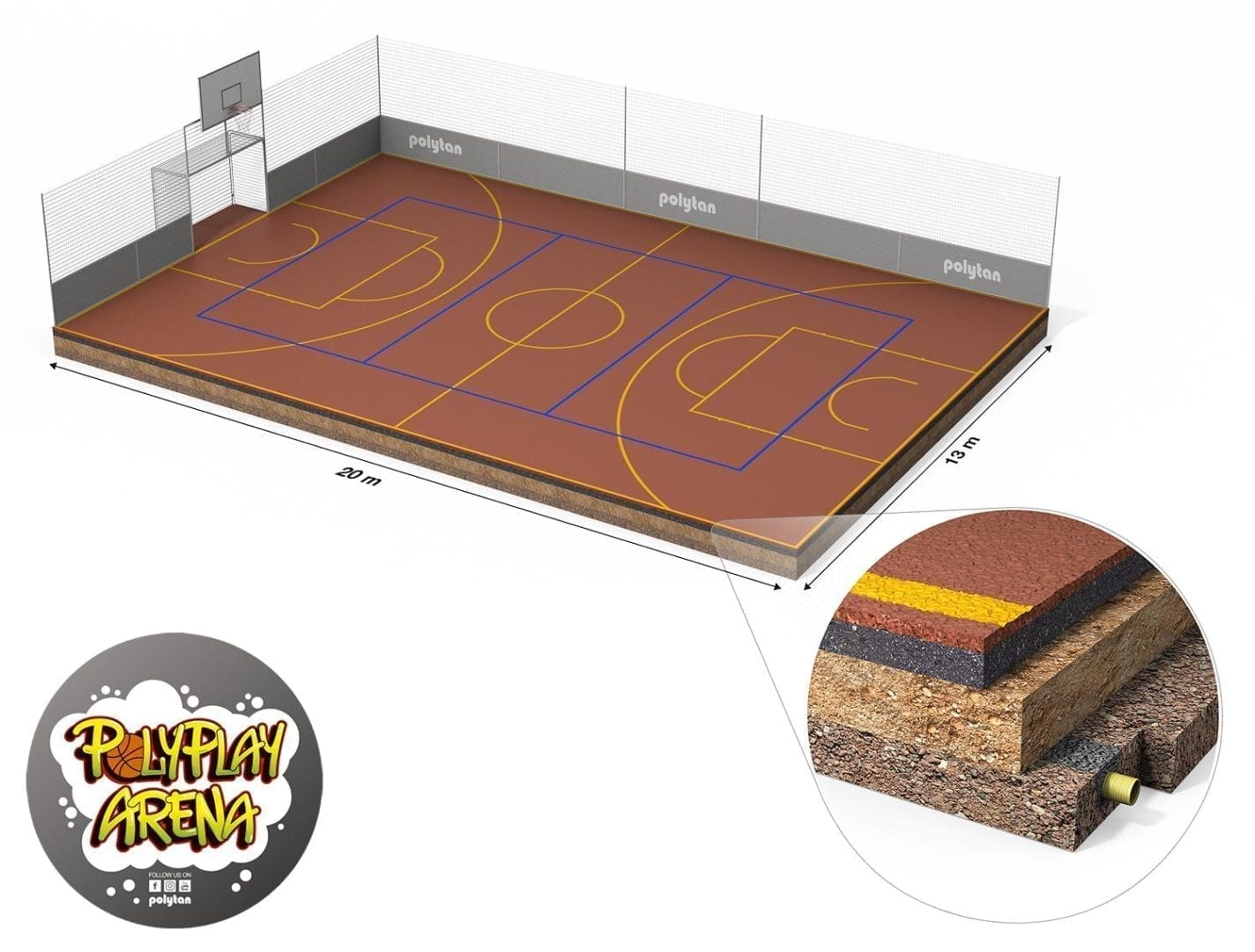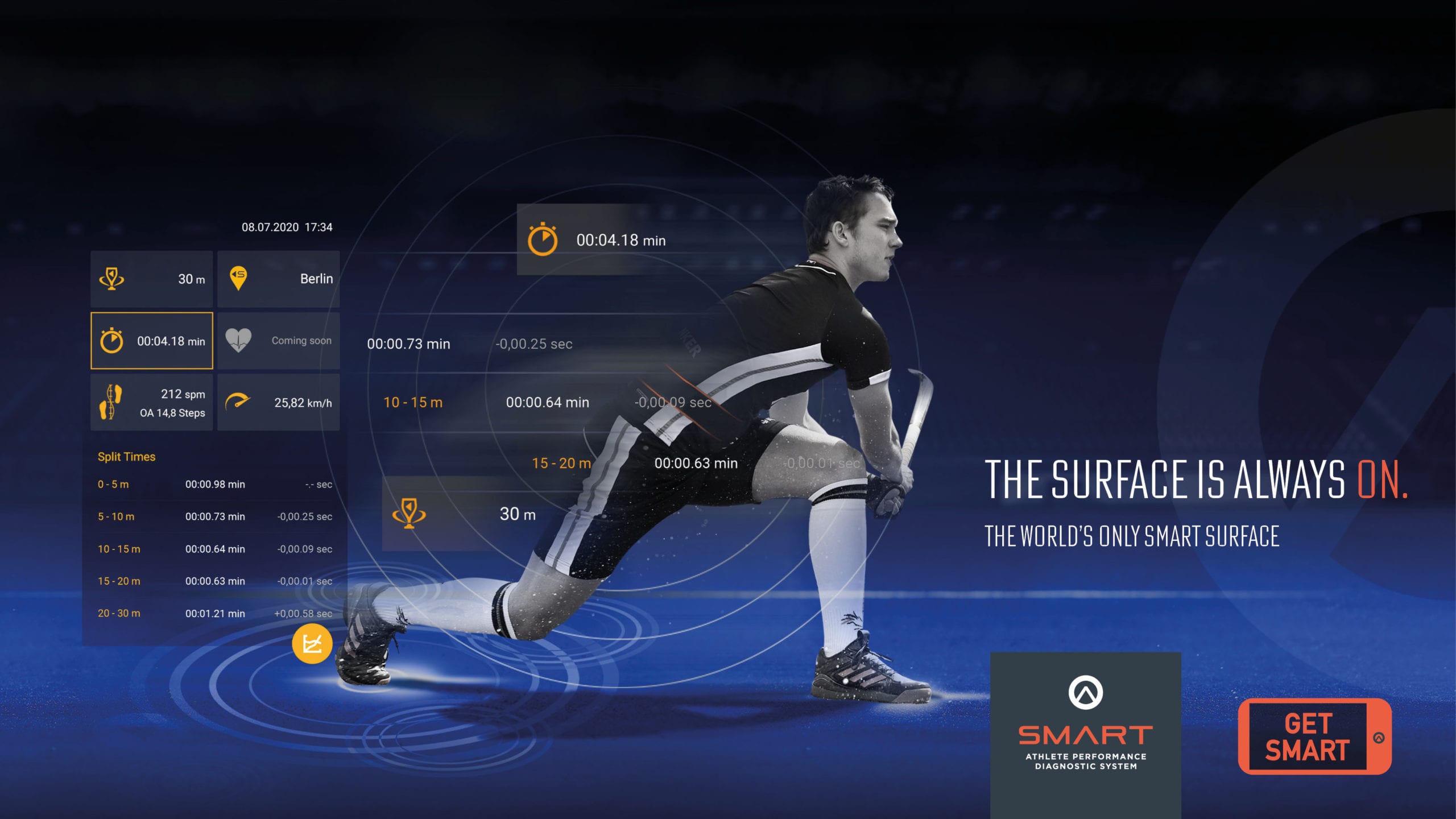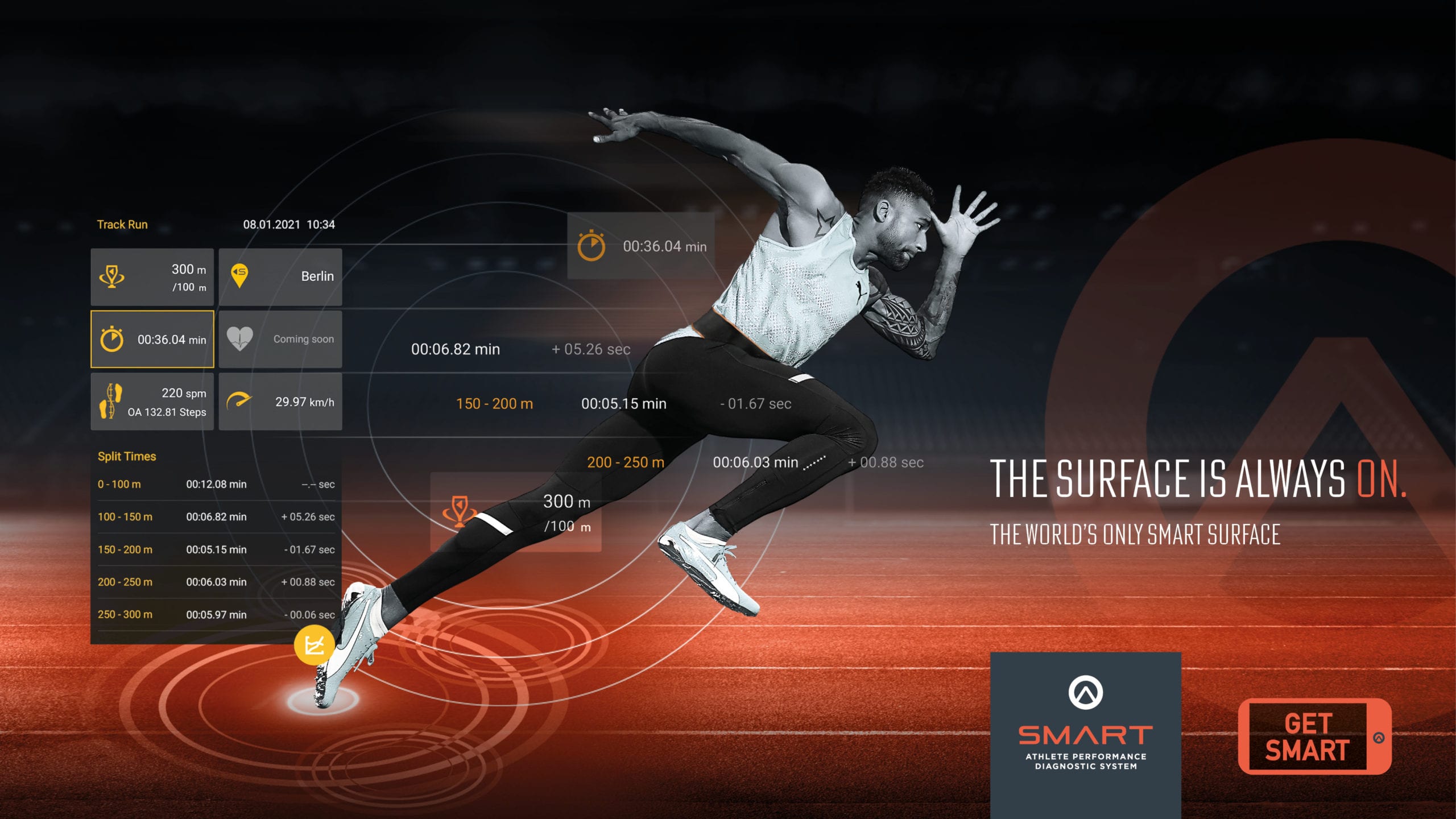The ideal artificial grass for building a sports ground is durable, low-maintenance and can be played upon throughout the year, regardless of the weather. On average, an artificial grass playing field can be used for 1,500 to 2,000 hours a year without any loss of quality – comparatively, a natural grass pitch can be used for just 400 to 800 hours. But how do you find the best quality artificial grass?
ARTIFICIAL GRASS FOR FOOTBALL FIELDS: QUALITY VARIES
Artificial turf is becoming increasingly popular for the reasons mentioned above (and many more!) – in sports clubs as well as schools, universities and municipal playing fields. Above all, artificial grass has become a firm fixture in football, hockey, rugby and tennis, as well as everyday sports. However, not all artificial grass is the same: Public discussions about its advantages and disadvantages continue to bubble, especially when artificial playing surfaces are used in international football tournaments.
One example is the 2015 FIFA Women’s World Cup in Canada: Some of the artificial grass pitches in the preliminary round in particular received a lot of criticism (too hot, too dull, too high a risk of injury!), but the artificial grass pitch in the final stadium in Vancouver received high praise from all sides. So, what conclusion can we draw from this? The quality of an artificial grass pitch can vary greatly. To help you find the right product for your sports club or private or municipal client, we have compiled the most important characteristics of a supplier of high-quality artificial grass products for constructing a playing field.
AGE, CONDITION, MATERIAL AND STRUCTURE – ALL CRUCIAL FACTORS IN DETERMINING THE QUALITY OF ARTIFICIAL GRASS
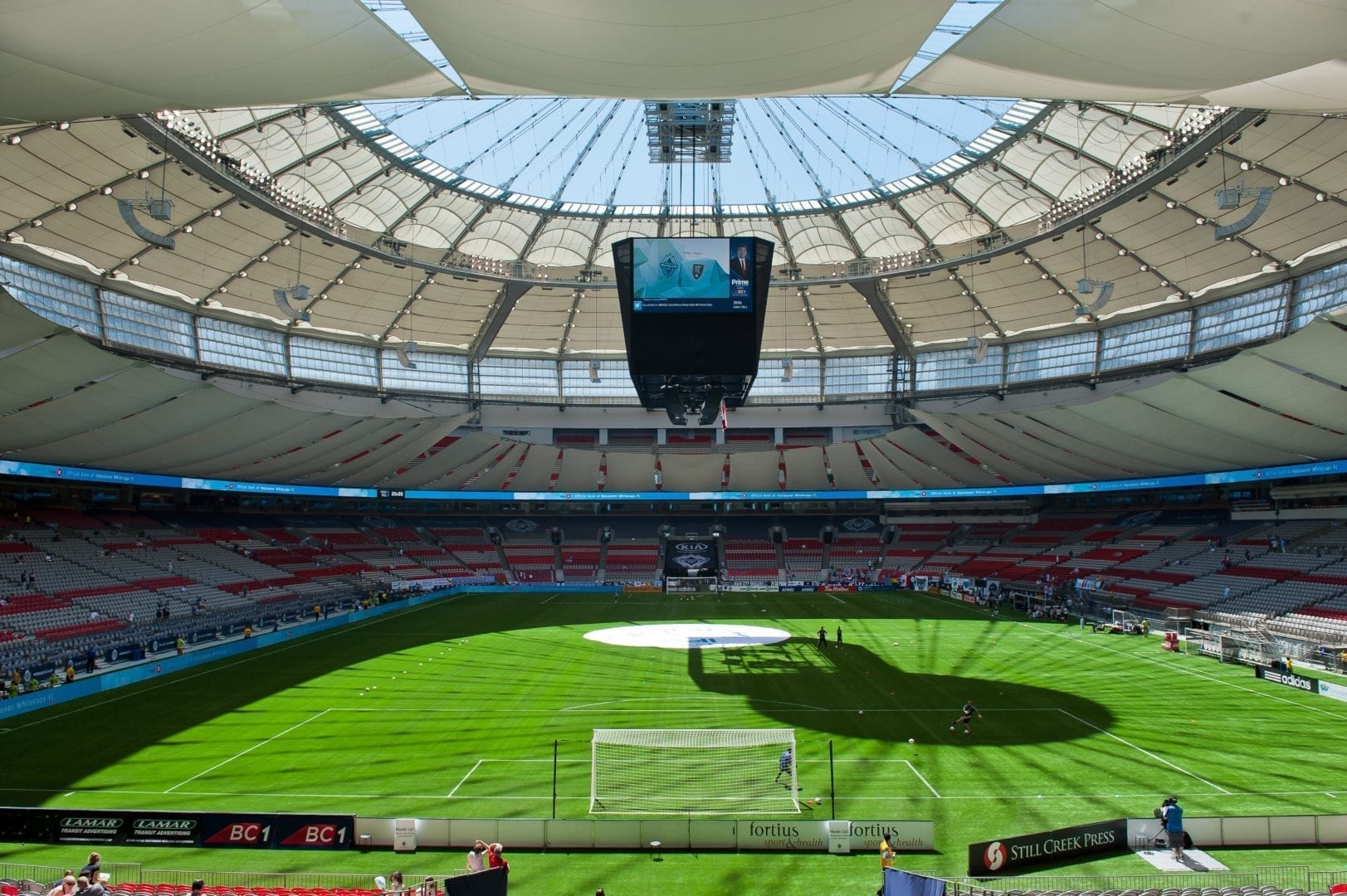
In essence, the quality of an artificial turf depends on the age, maintenance condition, material and structure of the playing surface. In any case, to prevent injury a worn-out playing field should be replaced by a new, advanced, contemporary artificial turf system. The decisive quality criterion is the artificial turf itself – here there are numerous products on the market that vary greatly in their material properties and construction. Let’s first take a look at the production process behind artificial grass, because even at a very early stage – namely in the formulation of the masterbatch – positive characteristics of the finished artificial grass can already be defined.
TAILOR-MADE ARTIFICIAL TURF ACHIEVED THROUGH IN-HOUSE RESEARCH AND DEVELOPMENT
A masterbatch consists of selected plastic additives, UV stabilisers, process accelerators and other important additives, which are mixed in concentrated form into the later compound, namely the composite (e.g. PE). This masterbatch formulation determines the specific properties of the artificial grass filament such as resilience, colour, UV resistance, elasticity and surface temperature, and can be tailored in its formulation depending on the future application area. Polytan is the only manufacturer in the world that develops and produces its own masterbatches in its in-house laboratories and production facilities in order to ensure consistently high quality and optimal suitability for the intended use, right from the start. The next step in artificial grass production – production of the yarn – also has a significant impact on the texture of the final synthetic turf.
TUFTING & BACKING – MADE IN GERMANY
Most artificial grass providers for sports field construction source their filaments (yarns) from external manufacturers. Polytan is one of the few manufacturers in the world that, since 1995, produces its own artificial grass from start to finish, including the filaments, at the company’s own production site in Grefrath – the result is a product that is truly ‘Made in Germany‘. In the manufacture of synthetic grass yarn, the liquid plastic granulate mixture is extruded through a die plate, cooled, and, in a special process, stretched and textured as required. This results in fine yarn threads (monofilaments), of different thicknesses and widths, textured or straight, that are suitable for different requirements. For example, the filaments used for the LigaTurf RS+ CoolPlus synthetic football pitch system are approximately 360 μm thick, straight and modelled on natural blades of grass. Where the required filament is more robust and requires less care, as is the case with the LigaGrass Pro CoolPlus grass system, the monofilaments are textured and have a fibre thickness of approximately 250 µm.
- All Polytan synthetic grasses feature different filaments that are tailored to the specific sport and its requirements – from football to hockey, rugby and American football to tennis or multi-sport facilities. Such adjustments are not possible with a natural turf or hard pitch.
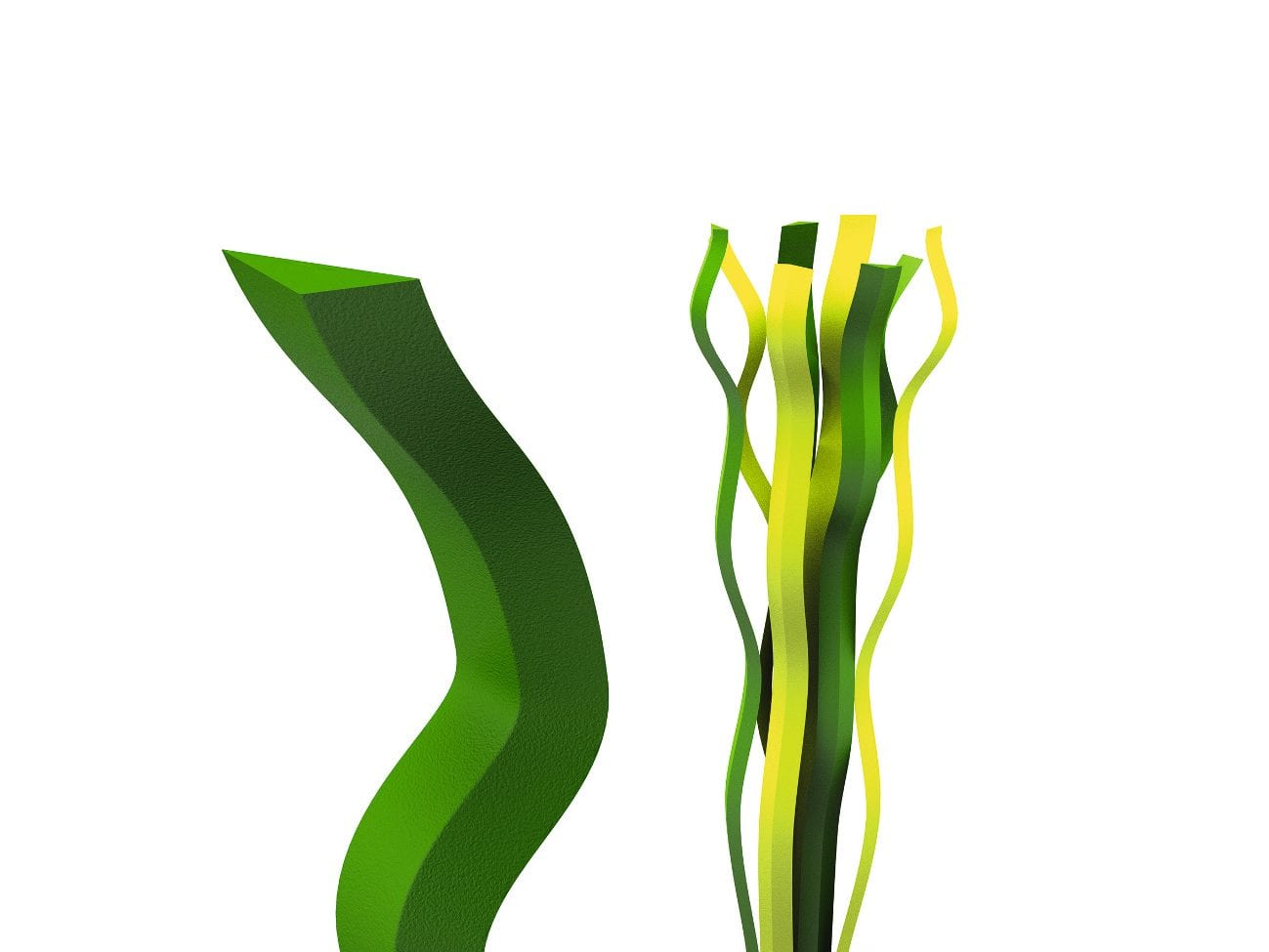
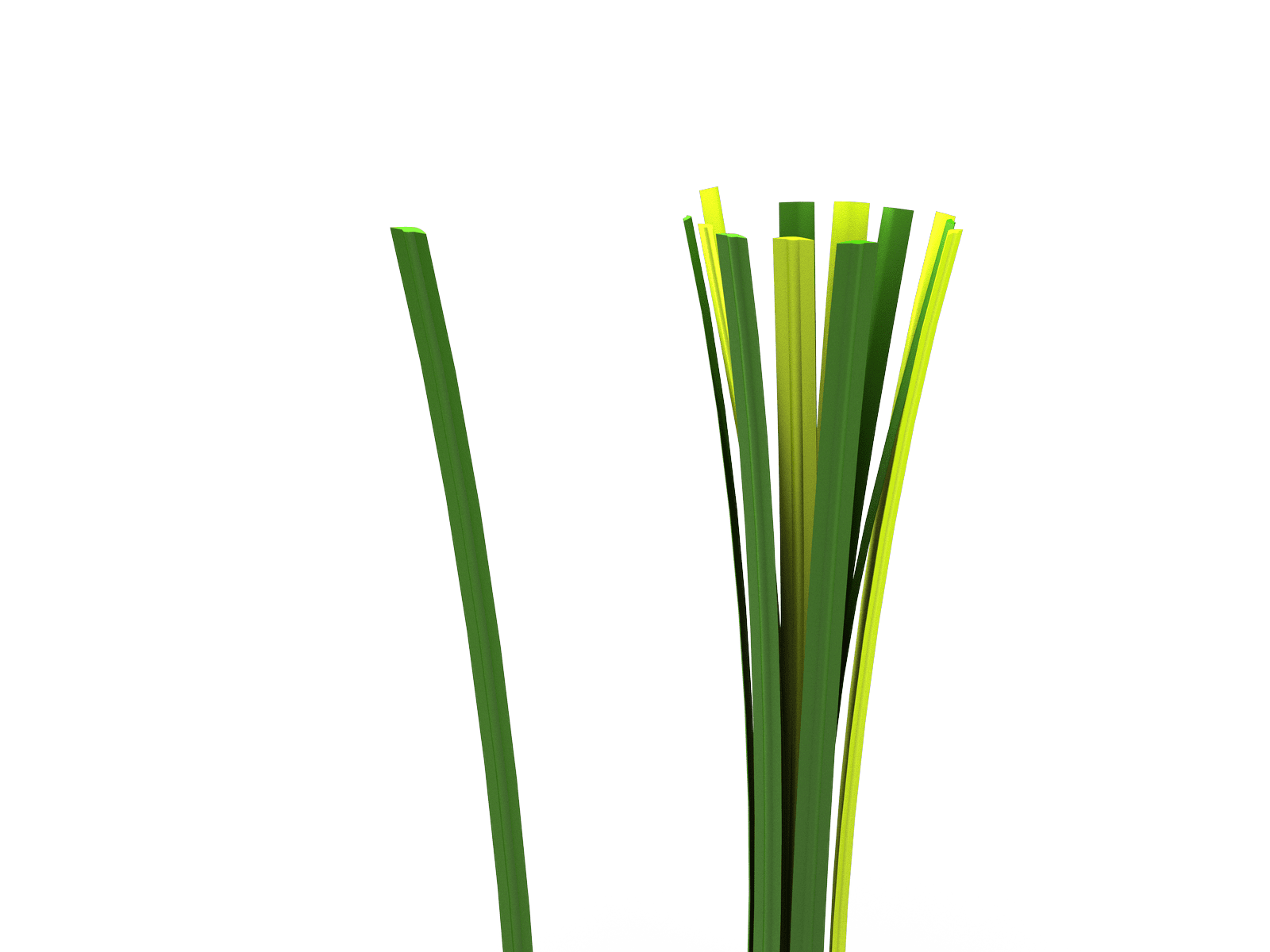
Next, depending on the required quality, 4 to 6 monofilaments are bundled into a multifilament and incorporated with needles using the tufting method, a process that is similar to sewing, in a prefabricated carrier layer, known as the backing, according to the specified pile height (fibre length). Subsequently, the tufts are permanently fixed with a coating compound.
- The pile height, the fibre geometry and the distance between the individual filament tufts give the resulting artificial grass its specific appearance and determine its possible application. In order to create particularly natural-looking artificial grass, different shades of green are used for the filaments.
At the end of this manufacturing process, Polytan imposes strict quality controls that go far beyond the standards and regulations that currently apply to put artificial grass through its paces. Whether the finished synthetic grass can exercise its full quality, depends on the selected infill as well as on the interaction of all its components as a system.
THE ADVANTAGES OF AN SYNTHETIC TURF SYSTEM AND ITS OPTIMAL CONSTRUCTION
A modern, third generation, synthetic turf system consists of other components in addition to the artificial grass area: an elastic infill granulate, also known as infill, and a solid, load-bearing elastic layer. The only incidence in which infill is not used is in artificial turf for hockey pitches; here, the blades are significantly shorter so as not to distort the running direction of the ball. The elastic layer is approximately 30 centimetres thick and usually consists of a polyurethane binder and recycled vehicle tyres. In addition to artificial grass systems with elastic layers, artificial grass constructions are also available on the international market. In many European countries (such as the Netherlands,) artificial grass pitches without an elastic layer are widespread.
The missing elastic layer is compensated for by an extended filament length (pile height) and correspondingly more infill. However, more infill means higher material costs and increased maintenance, as it must be regularly loosened and refilled in larger quantities. In addition, a compact elastic layer retains consistently good elasticity and has a life span of over 30 years. If the playing surface wears out after about 10 to 15 years, the next generation artificial grass can usually be installed over the existing elastic layer. Thus, artificial turf systems with an elastic layer prove much cheaper in the long run and reduce the risk of injury to the athletes thanks to their excellent force reduction properties. Another contributing factor to the quality of the artificial turf system is the already mentioned infill, which is available in numerous variants.
WHICH GRANULATE MATERIALS ARE SUITABLE FOR WHICH ARTIFICIAL TURF?
The interaction of the individual components in the overall artificial grass system is complex, and the infill granulate plays a decisive role. Depending on the desired playing characteristics and the available budget, granulates of different materials, colours and shapes are available. Artificial grass manufacturers such as Polytan who specialise in playing field construction, can draw on many years of experience here, and can provide expert advice on every construction project, involving every type of sport. Such highly specialised artificial grass suppliers such as Polytan develop their own infill granules to optimally fit their artificial turf systems. The repertoire of a high-quality artificial grass manufacturer should also include expert installation and extensive maintenance and renovation services.
PROFEESSIONAL INSTALLATION USING THE IN-SITU INSTALLATION METHOD
Sports floors can only fully develop their desired athletic properties if all components interact precisely with one another through professional and proper installation. For this reason, only trained specialists or certified companies should install artificial grass system. For Polytan, for example, this applies to all system components – from the installation of the elastic layer using the in situ installation method, the loose laying of the artificial grass carpet to the final marking and lining of the playing field. The leading German artificial grass supplier ensures that the individual components optimised in the development departments can actually reach their full potential in the system structures, regardless of where in the world they are installed.
CONCLUSION: A COMPLETE PACKAGE FROM A SINGLE SOURCE – THE ADVANTAGE OF A COMPLETE ARTIFICIAL GRASS PROVIDER
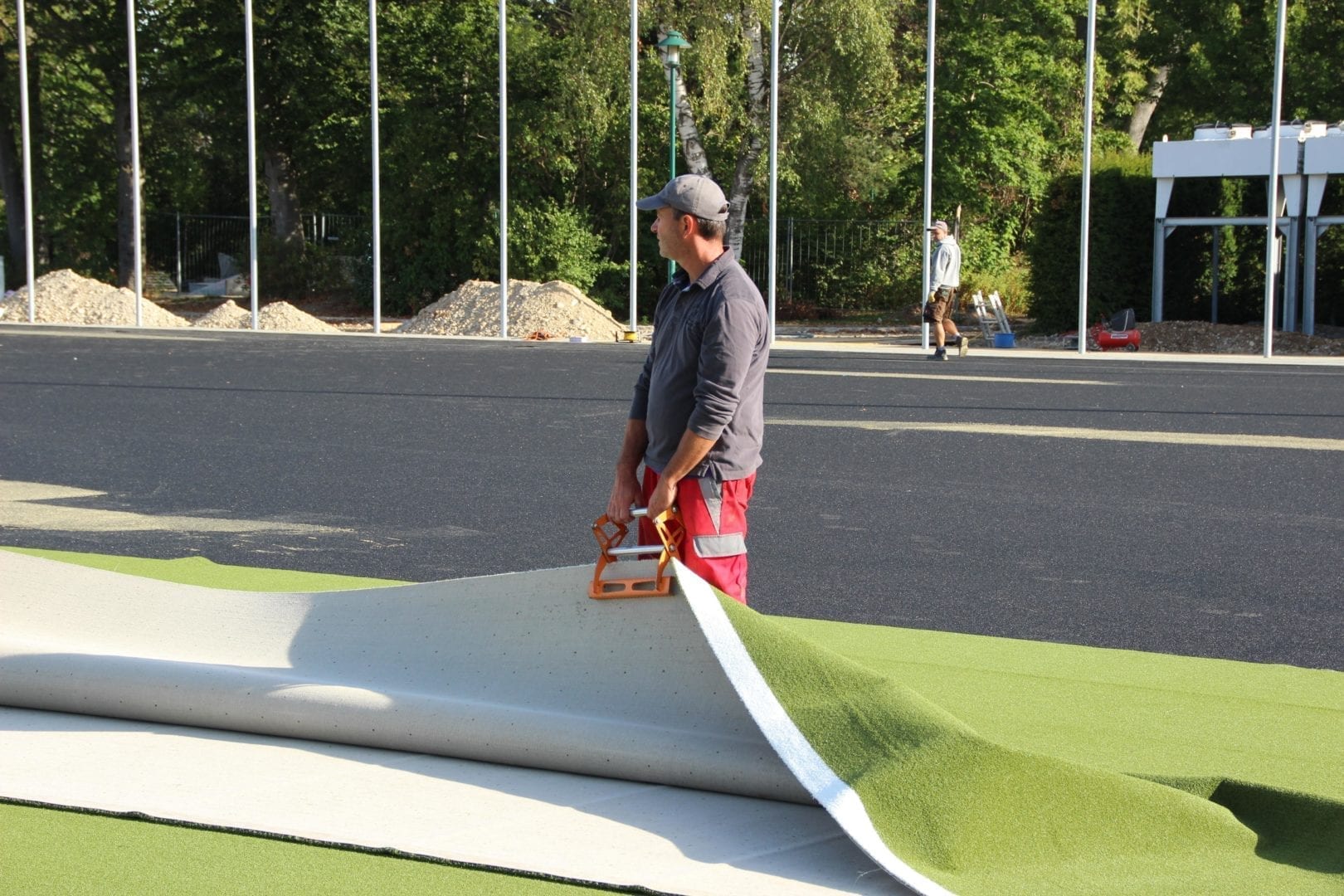
A high-quality synthetic grass manufacturer active in playing field construction leaves nothing to chance,
In Germany, the design is based on state of the art technology, which is represented by European standard EN 15330-1 2013 and DIN standard 18035-7 2014. RAL and DIN CERTCO also provide further quality assurance programmes. These quality standards ensure that artificial grass systems comply with applicable health and environmental legislation. If all of these criteria are taken into account, the customer receives a mature, durable and environmentally friendly grass system that far surpasses previous artificial turfs from the 80s and 90s in terms of play characteristics, athlete protection, sustainability and investment security, in addition to offering significantly improved gaming pleasure. If you have any questions, please do not hesitate to contact us.
